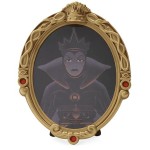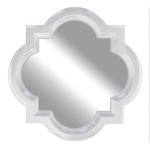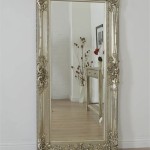Antique Vanity With Mirror
An antique vanity with a mirror represents more than just a piece of furniture; it's a tangible link to the past, reflecting bygone eras of elegance and craftsmanship. These pieces offer a unique blend of functionality and artistry, serving as both practical dressing tables and decorative centerpieces in homes today. Understanding the history, styles, and key features of antique vanities can aid in appreciation and informed purchasing decisions.
History of the Vanity
The vanity table, as we know it today, emerged in the 18th century, evolving from earlier forms of dressing furniture like chests and boxes. The growing emphasis on personal grooming and appearance during this period fueled the demand for dedicated spaces for applying cosmetics and styling hair. The addition of a mirror, often intricately framed or incorporated into the vanity's design, elevated the piece further, reflecting both the user and the evolving aesthetics of the time.
Victorian Era Vanities
The Victorian era (1837-1901) witnessed a flourishing of vanity designs. Often constructed from dark woods like mahogany or walnut, these vanities frequently featured elaborate carvings, intricate marquetry, and decorative hardware. The mirrors were often large and sometimes incorporated into a triptych design, allowing for views from multiple angles. These pieces reflected the Victorian emphasis on ornamentation and grandeur.
Art Deco Vanities
The Art Deco period (1920s-1930s) ushered in a new era of design, impacting vanity styles significantly. Geometric shapes, sleek lines, and luxurious materials like chrome and Bakelite became defining features. Mirrors often adopted rectangular or circular shapes, reflecting the streamlined aesthetic of the era. The emphasis shifted from ornate Victorian embellishments to a more modern and minimalist approach.
Key Features to Consider
When evaluating an antique vanity with a mirror, several key features warrant careful consideration. Understanding these elements can help determine the piece's authenticity, value, and suitability for a given space.
Wood Type and Construction
The type of wood used in the vanity's construction speaks to its quality and age. Examine the wood for signs of solid construction, such as dovetail joints and hand-carved details. Common woods used in antique vanities include mahogany, walnut, oak, and rosewood. The presence of veneers, inlays, or marquetry can indicate a higher level of craftsmanship.
Mirror Condition and Style
The mirror is a crucial element of the antique vanity. Inspect it for signs of age, such as foxing or silvering loss, which can contribute to its antique charm but also impact clarity. The mirror's frame and its integration with the vanity's design are also important factors to consider, reflecting the style and period of the piece.
Hardware and Embellishments
Original hardware, such as drawer pulls, knobs, and hinges, adds to the authenticity and value of an antique vanity. Examine the hardware for its style and condition, noting any replacements or restorations. Decorative elements like carvings, inlays, and painted details contribute to the overall aesthetic and can help identify the vanity's period and style.
Size and Functionality
Consider the vanity's dimensions and its intended placement within a room. Assess the functionality of drawers and compartments, ensuring they meet practical storage needs. The size and configuration of the mirror should also be evaluated in relation to the user's needs and the overall scale of the vanity.
Restoration and Care
Antique vanities may require restoration to address issues like damaged wood, loose joints, or deteriorated finishes. Consult with a qualified antique furniture restorer to ensure appropriate techniques are employed to preserve the piece's historical integrity. Regular cleaning and polishing with appropriate products will help maintain the vanity's beauty and protect it for future generations.
Value and Authenticity
The value of an antique vanity with a mirror is determined by several factors, including its age, rarity, condition, and provenance. Consulting with reputable antique dealers or appraisers can provide insights into a piece's value and authenticity. Documentation, such as historical records or previous ownership details, can significantly enhance a vanity's provenance and overall value.

Sold 1920s Antique Vanity With Mirror And Stool Dressing Norway

Vintage Solid Wood Trifold Mirror Vanity Dresser 1920 1950 Rare 6 Drawers

Antique Vanity With Mirror Chair And Nightstand Makeover

Sold 1920s Antique Vanity With Mirror And Stool Dressing

Antique Makeup Vanity Dresser Mirror

Sold Portfolio Piece Black Painted Antique Vanity With Denmark

Furniture Dressers Vanities 1900 1950 Antiques Browser Antique Vanity Shabby Chic Dresser Trifold Mirror

Sold 1920s Antique Vanity With Mirror And Stool Dressing Denmark

Beautiful Vanity Order Your Own Antique Painted The Goth Home Decor Gothic Bedroom

Antique Vanity








